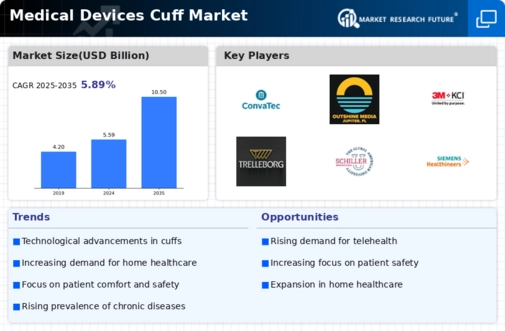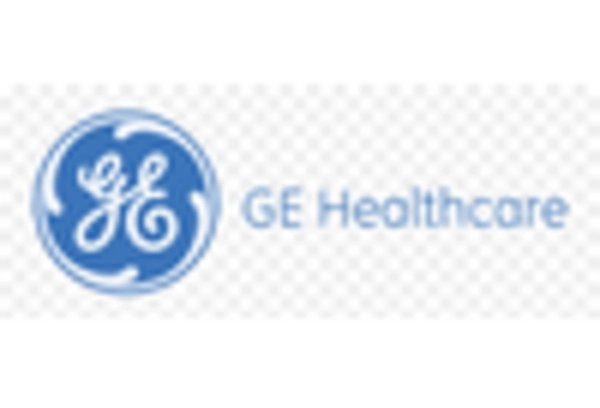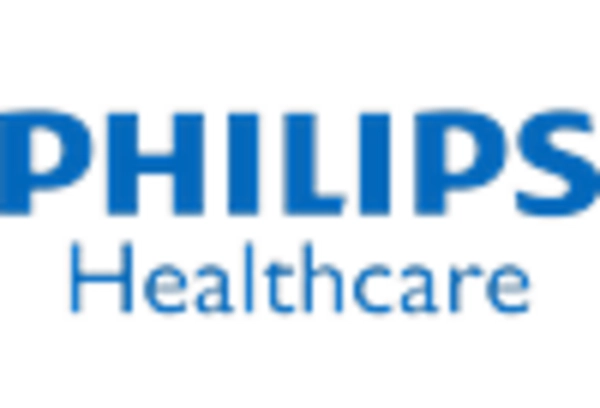Rising Prevalence of Chronic Diseases
The increasing incidence of chronic diseases such as hypertension and diabetes is a primary driver for the Medical Devices Cuff Market. As these conditions require regular monitoring, the demand for cuffs that facilitate accurate blood pressure readings is surging. According to recent statistics, nearly 1.13 billion people worldwide suffer from hypertension, necessitating the use of medical cuffs for effective management. This trend is likely to continue, as healthcare systems increasingly prioritize early detection and management of chronic conditions. Consequently, manufacturers are focusing on developing advanced cuffs that offer enhanced accuracy and user-friendliness, thereby expanding their market reach. The Medical Devices Cuff Market is thus positioned for growth, driven by the urgent need for reliable monitoring solutions.
Growing Awareness of Preventive Healthcare
The rising awareness of preventive healthcare is significantly influencing the Medical Devices Cuff Market. As individuals become more health-conscious, there is a growing emphasis on regular health check-ups and self-monitoring. This trend is reflected in the increasing sales of home-use medical cuffs, which empower consumers to take charge of their health. Market data suggests that the demand for home monitoring devices is on the rise, with a notable increase in the adoption of blood pressure cuffs among consumers. This shift towards preventive measures is likely to drive innovation in the Medical Devices Cuff Market, as manufacturers strive to create products that are not only effective but also accessible and easy to use for the average consumer.
Regulatory Support and Healthcare Policies
Regulatory support and favorable healthcare policies are playing a crucial role in shaping the Medical Devices Cuff Market. Governments and health organizations are increasingly promoting the use of medical devices for monitoring health conditions, which is leading to greater acceptance and integration of these products in healthcare systems. Recent initiatives aimed at improving access to healthcare services have resulted in increased funding for medical devices, including cuffs. This supportive environment encourages innovation and investment in the Medical Devices Cuff Market, as companies seek to develop compliant and effective products. As regulations evolve to accommodate new technologies, the market is likely to experience sustained growth, driven by the need for reliable monitoring solutions that align with healthcare objectives.
Technological Advancements in Medical Devices
Technological innovations are reshaping the Medical Devices Cuff Market, leading to the development of more sophisticated and user-friendly products. The integration of digital technologies, such as Bluetooth connectivity and mobile applications, allows for real-time monitoring and data sharing, enhancing patient engagement and compliance. Recent data indicates that the market for connected health devices is expected to grow significantly, with smart cuffs becoming increasingly popular among consumers. These advancements not only improve the accuracy of measurements but also facilitate remote patient monitoring, which is becoming essential in modern healthcare. As a result, the Medical Devices Cuff Market is likely to witness a surge in demand for technologically advanced cuffs that cater to the evolving needs of healthcare providers and patients alike.
Aging Population and Increased Healthcare Needs
The aging population is a significant driver of the Medical Devices Cuff Market, as older adults are more susceptible to chronic health conditions that require regular monitoring. With the global population aged 65 and older projected to reach 1.5 billion by 2050, the demand for medical cuffs is expected to rise correspondingly. This demographic shift necessitates the development of cuffs that cater specifically to the needs of elderly patients, including features such as larger displays and simplified operation. Healthcare providers are increasingly recognizing the importance of regular monitoring in this age group, further propelling the growth of the Medical Devices Cuff Market. As a result, manufacturers are likely to focus on creating products that enhance the quality of life for older adults while ensuring accurate health assessments.


















Leave a Comment